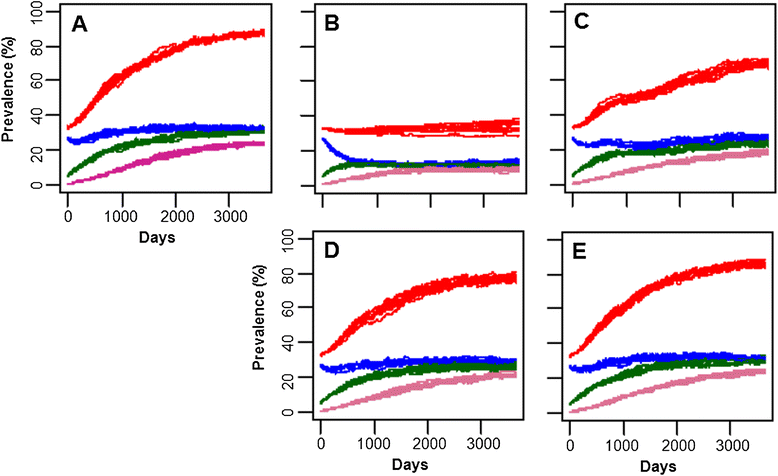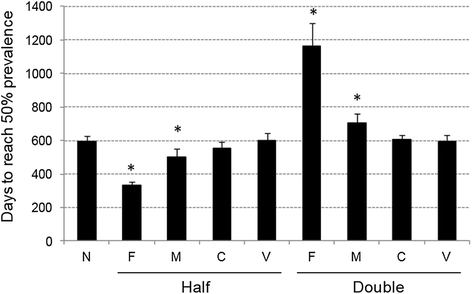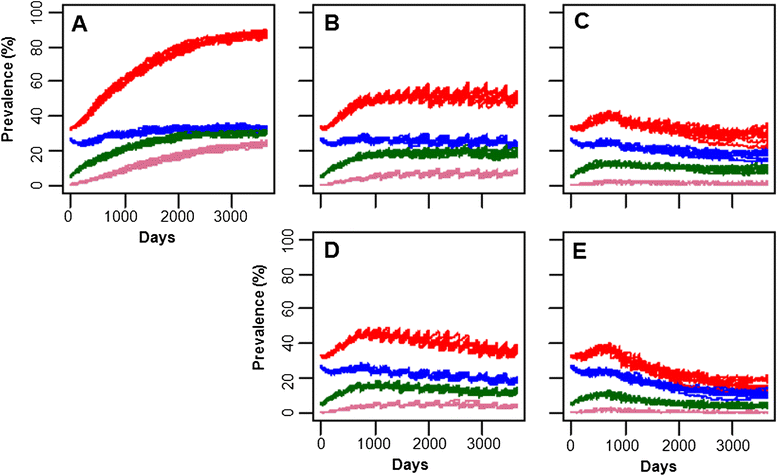Agent-based model for Johne's disease dynamics in a dairy herd
- PMID: 26091904
- PMCID: PMC4474466
- DOI: 10.1186/s13567-015-0195-y
Agent-based model for Johne's disease dynamics in a dairy herd
Abstract
Johne's disease is an infectious gastrointestinal disease in ruminants caused by Mycobacterium avium subsp. paratuberculosis that causes diarrhea, emaciation, decreased milk production and eventually death. The disease is transmitted in utero and via milk and colostrums to calves, and fecal-orally to all age classes. Financial losses due to the disease are estimated to be over $200 million in the US dairy industry. The goal of this study was to evaluate the cost effectiveness of control measures based on diagnosis with a sensitive ELISA, EVELISA. An agent-based, discrete time model was developed to simulate Johne's disease dynamics in a US dairy herd. Spatial aspects of disease transmission were taken into account by using six spatial compartments. The effects on disease prevalence were studied with and without transmission routes included in the model. Further, using the model, cost effectiveness of ELISA-based Johne's disease control was evaluated. Using the parameters we collected and assumed, our model showed the initial prevalence of Johne's disease (33.1 ± 0.2%) in the farm increased to 87.7 ± 1.7% in a 10 year-simulation. When ELISA-based control measures were included in the simulation, the increase in prevalence was significantly slowed down, especially when EVELISA was used. However, the level of the prevalence was still higher than the initial level after 10 year simulation even with the ELISA-based diagnostic intervention. The prevalence was further reduced when quarterly ELISA testing was included. The cost analysis showed that the quarterly ELISA and EVELISA testing could bring $44.8 and $51.5/animal/year more revenues, respectively, to a dairy farm.
Figures




References
-
- USDA/NAHMS report, Johne’s Disease on U.S. Dairies, 1991–2007. http://www.aphis.usda.gov/animal_health/nahms/dairy/downloads/dairy07/Da..., Accessed 7 May 2015
Publication types
MeSH terms
LinkOut - more resources
Full Text Sources
Other Literature Sources

